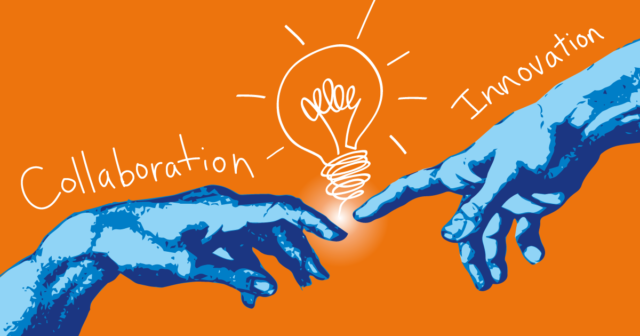
Welcome to this informative post on the subject of innovation. Innovation is the act of introducing something new or different that creates value. It’s a catalyst for societal progress and a must-have in the business world to maintain a competitive edge.
Without innovation, we would still be stuck in the dark ages, both literally and metaphorically. The primary goal of this post is straightforward: to guide you through different strategies and approaches to generate inventive and groundbreaking ideas.
Understanding Innovation

When we talk about innovation, we mean the process of developing new methods, ideas, or products that solve problems or improve existing solutions. It’s not just about wild ideas; it’s about practical creativity that makes life better or more efficient.
In the broader scope, innovation has a profound impact on society. It brings about technological advancements that improve health, enhance communication, and make tasks easier.
For businesses, the story is no different. Innovation keeps companies afloat, helps them stand out in saturated markets, and often paves the way for new markets entirely. This is why companies invest so much in research and development, to check this frontier for the next big thing.
The Importance of Inventions
Inventions are essentially the backbone of innovation. These are the tangible products or discernible methods that come out of the innovative process. Inventions have the power to drastically change our way of life and shape the course of history.
Think about the invention of the wheel, the light bulb, or the Internet. These aren’t just products; they’re revolutions packaged in physical form. They’ve made tasks easier, improved our quality of life, and opened doors to possibilities that were unimaginable before.
Start with a Problem

The road to invention often begins with a problem that needs solving or a gap that needs filling. In essence, problems serve as the launch pad for creativity and innovation. The wheel didn’t just randomly come into existence; it was invented to solve the problem of moving heavy objects more efficiently.
When you start with a problem, you have a focused objective. This makes it easier to come up with solutions that are both practical and impactful. So, the next time you’re stuck in a situation that frustrates you, instead of complaining, think of it as an opportunity to invent.
Observing Your Surroundings
Awareness of your environment can serve as a great inspiration for inventions. This involves taking note of everyday situations, common problems, and even minor irritants that most people just accept as ‘the way things are.’
Sometimes, the solutions to these often-overlooked issues can become the most impactful inventions. For instance, Velcro was invented when a Swiss engineer observed how burrs stuck to his dog’s fur.
Mind Mapping

Mind mapping is a technique that involves visually organizing your thoughts to understand the relationship between various ideas. You start with a central concept in the middle of a page and then draw branches that represent related ideas, words, or tasks.
It’s like constructing a tree of your thoughts. This method is highly effective when you’re trying to solve a problem or come up with new ideas. Mind mapping can spark creativity by forcing you to explore different aspects and perspectives of the central issue.
Brainstorming Techniques
Brainstorming is another critical tool for innovation. It’s the act of freely generating a plethora of ideas without initially worrying about their viability. There are various methods to brainstorm effectively.
One popular approach is free association, where you say or write down whatever comes to mind regarding a topic. Another is to have brainstorming sessions with a group where members bounce ideas off one another.
Group brainstorming can be particularly effective because it brings together diverse perspectives, making the pool of ideas richer and more varied. The key is to create a judgment-free zone to let the ideas flow naturally.
Collaborative Innovation

Working with others can dramatically amplify the innovative process. When you collaborate, you’re combining different sets of skills, knowledge, and perspectives. This mixture often leads to more robust and well-rounded solutions.
For example, in the world of technology, we often see interdisciplinary teams made up of engineers, designers, and marketers who work together to create a new product. The benefit of such collaboration is that it allows for immediate feedback and iterative development.
Learning from Failures
Failure is often viewed negatively, but in the context of innovation, it’s almost a requirement. Many great inventors faced numerous setbacks before achieving success.
Thomas Edison, for instance, failed countless times before inventing the light bulb. Each failure serves as a learning opportunity, helping you understand what doesn’t work and bringing you one step closer to finding what does.
So don’t be discouraged by failures; instead, view them as stepping stones on your path to successful innovation. To learn more about the importance of failure in the innovative process, consider studying the journeys of successful inventors and entrepreneurs.
Keeping a Notebook

Keeping a notebook specifically for your inventive ideas can be incredibly useful. Any time an idea or a solution to a problem pops into your head, jot it down. This practice ensures that you don’t forget these fleeting moments of inspiration.
Over time, you’ll have a rich repository of ideas to sift through. You never know which scribbled thought could turn into your next big invention. Moreover, revisiting your notes can often lead to new insights or combinations of ideas that you hadn’t thought of before.
Staying Informed
Another essential aspect of innovation is staying updated with the latest trends and advancements in your field of interest. Knowledge is a critical component of innovation.
Being aware of what’s already out there can inspire you to think of ways to improve existing methods or come up with entirely new solutions. Read journals, follow industry news, and even consider taking courses to broaden your understanding.
Conclusion

In this post, we’ve gone over what innovation means and why it’s so crucial for both society and individual growth. We’ve looked at the importance of starting with a problem, the benefits of observation, and tools like mind mapping and brainstorming to help organize your thoughts.
Collaboration with others can expand your innovative potential, and learning from failures is part and parcel of the process. Keeping a dedicated notebook for your ideas and staying informed about your field can also significantly aid in your innovative endeavors.












